So, you're going on your first real skiing adventure! Without the lifts, without the queues and no man-made slopes. It's all you and your friends on an adventure in nature. Well, as I was a first-timer myself last week, I thought I'd give you some tips based on my experience. It is bound to be fun, but even more so if you're well prepared. So hopefully I can help you a bit with that!
What is ski touring?
Ski touring is all about leaving the comfort of human controled mountains. It's about getting into the deep and untouched snow, working for a rewarding run down the hill and using your own strength. Ski touring takes place in the back country, untouched areas and usually off-piste outside of ski resorts. It can consist of single day trips or even multi-day trips from hut-to-hut for example.
It's a sport often practiced by people seeking more adventure, alpinists and people who want to reduce the costs of lift tickets. It can be compared to hiking for example, but with a bit more risk and skills needed for a safe adventure.
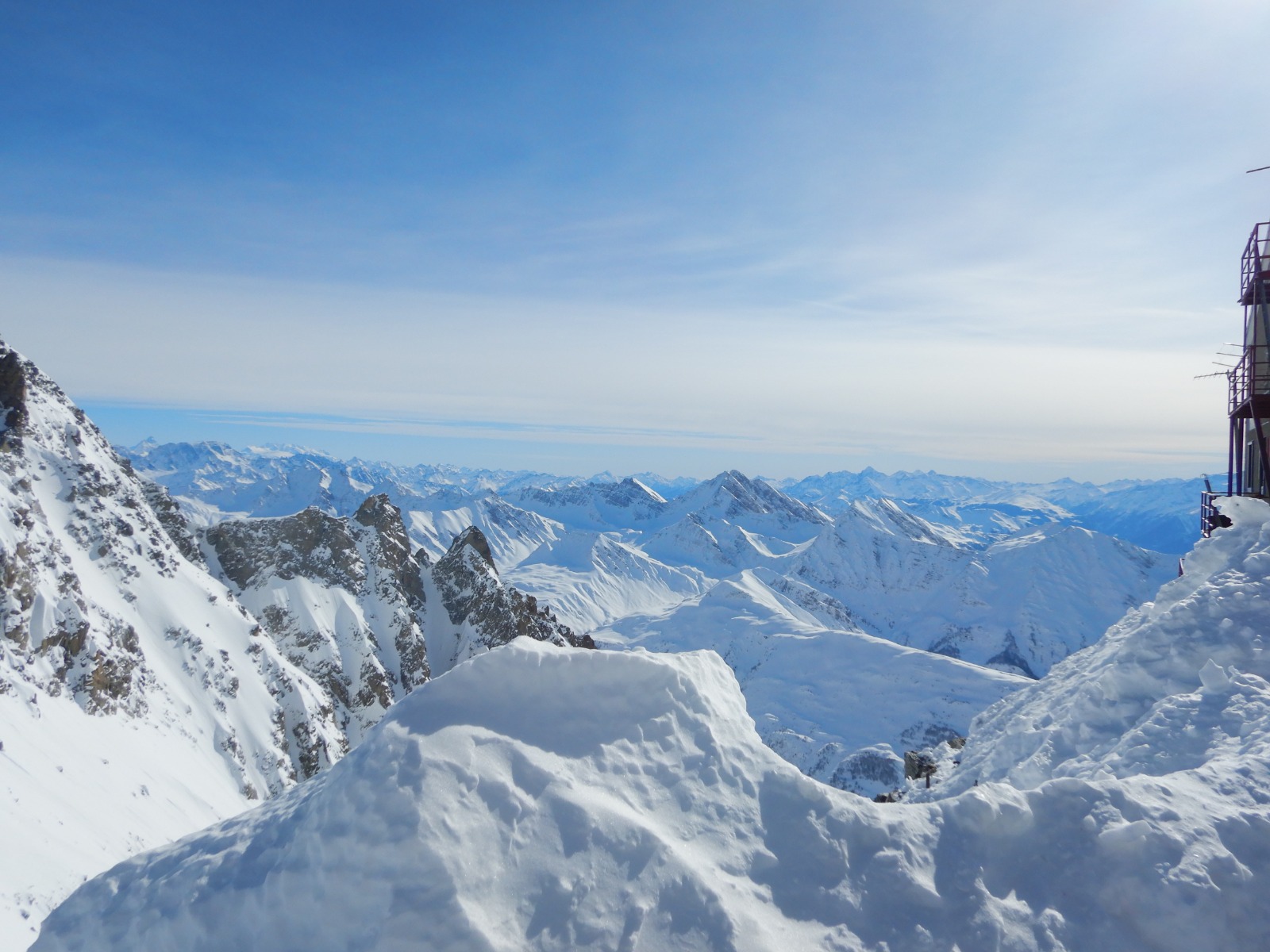
Equipment
There are many important differences between normal skiing and touring. For one, there's a difference in equipment. Often, in ski touring, the snow will be very different from the slopes you're used to. Therefore you'll need different skis. When skiing and carving you usually have quite slim skis. This is different for touring. Because of the thick layer of snow you'll be navigating through, it is important to stay on top as to not loose too much energy. Wider skis will do this for you. These skis will keep you on top of the snow instead of letting you sink. Also, the tips of the skis are more curved, again to get you on top the snow. The biggest difference in skis, however, is that your heels have to be free, meaning that you'll need different ski bindings that have the ability to lock you in in the front, without locking you in in the back when going up. Additionally, for walking up, climbing skins are necessary to make sure you don't slide down. It's a bit of a hassle to attach these to your skis before going up and take them om before going down.
As mentioned before, for walking up, raising your feet is necessary, just as in normal walking. This also means that you might want to have different shoes. While it is possible to go touring with normal ski shoes, this is far from comfortable. As you might have experienced, walking only a short distance in skiing shoes is already a pain in the ass. Touring shoes have a special option for walking, however, giving you more room to move your legs and ankle.
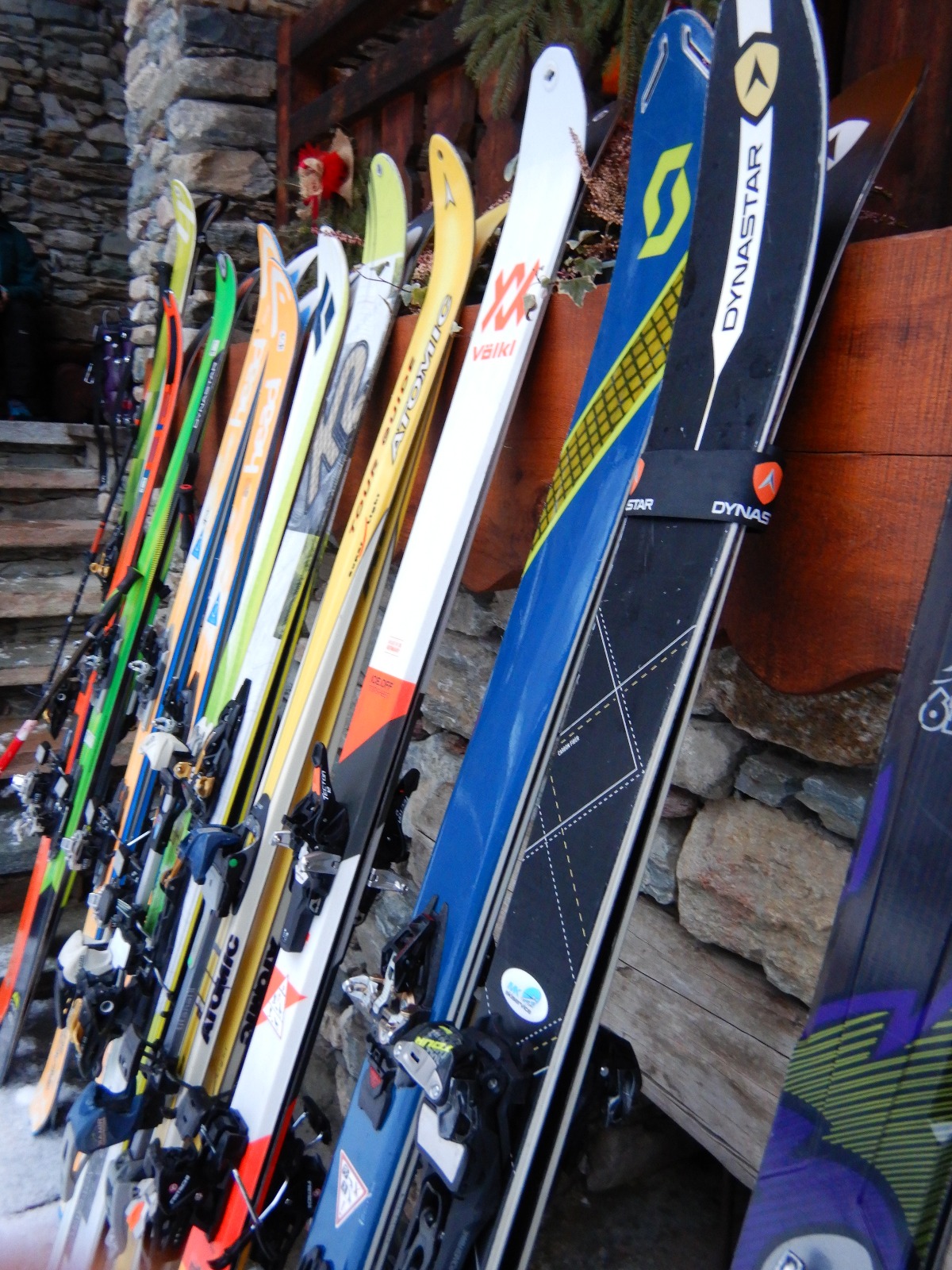
Last, but definitely not least, is safety. While with piste skiing you can depend on the decisions of other people, ski touring brings a lot of risks. It is therefore recommended that unless you have plenty of experience with touring and knowledge of avalanche risks, weather assessment and navigating, you always go with a guide. Really, this does not only save your life, but also that of others if you are the one to cause an avalanche because of poor preparation. To further reduce the risks of touring, it is important to bring and wear an avalanche beacon. This is an emergency locater that allows you to find people in an avalanche if they wear one, or that allows for you to be found. It is not only important to have this, but also to know how to use it before you go. Therefore, check out some videos on Youtube and ask your guide to practice this with you before you go. The beacon is also part of the total avalanche safety set which also consists of a probe and a shuffle. The probe will help you to find someone burried in an avalanche, while the shuffle will help you to dig them up.
To further reduce your risk of disappearing in an avalanche, you can get a backpack with an airbag. If you get caught in an avalanche you can inflate the airbag which gives you some space around your head and possible let's you stay quite on top of the snow if you're lucky. Also, these backpacks have a seperate compartment in which you can put your avalanche emergency set so that you can easily reach it in case of an emergency (some other normal skiing backpacks have this feature too). These airbag packs are quite expensive which is why not everyone has one. Finally, bring a headlight, extra batteries and an emergency kit in case something happens and you'll be in the mountains in the dark.
Additionally, as with skiing, you'll need proper clothes, a helmet, goggles, good sunglasses and ski poles.
Tips for a first timer
I recently went on my first trip which gave me quite some insight into what I should have prepared before going. Luckily I had a boyfriend who helped me out, but I think it is important to know these things before you go.
1. Ski touring is risky, be prepared
One of the best things of ski touring is the adventure that comes with it. Adventure, however, means risks. It is not just a 'fun sport' but a 'risk sport' and it is important to be aware of this. Don't just go out and hike up anywhere you think looks nice, and ski down, as this could put yourself and other people in danger. This being said, there are many ways to reduce the risks. The most important thing for a first timer is to go with a guide or a very, very experienced ski tourer. Make sure you use this opportunity to get familiar with the risk and risk reduction methods, ask your experienced friends for tips and tricks and maybe plan a tour yourself sometime to see if you get the hang of it. Important things to keep in mind are: check the avalanche forecast in the evening and morning and understand it fully, check the weather forecast, look at maps with routes and plan the route according to the avalanche forecast, your skills, weather and your fitness, and bring the right equipment.
2. Wear layers
For me it was difficult to figure out what clothes to bring, and this will be different for everyone. While one can feel super cold in 5 degrees, someone else might find it warm and while some get warm from walking in 5 minutes (like me), others might need half an hour of fast walking to warm up. However, there's a tip everyone can use, no matter how warm or cold you might feel. Being used to skiing, I always had a thick skiing jacket and snowboarding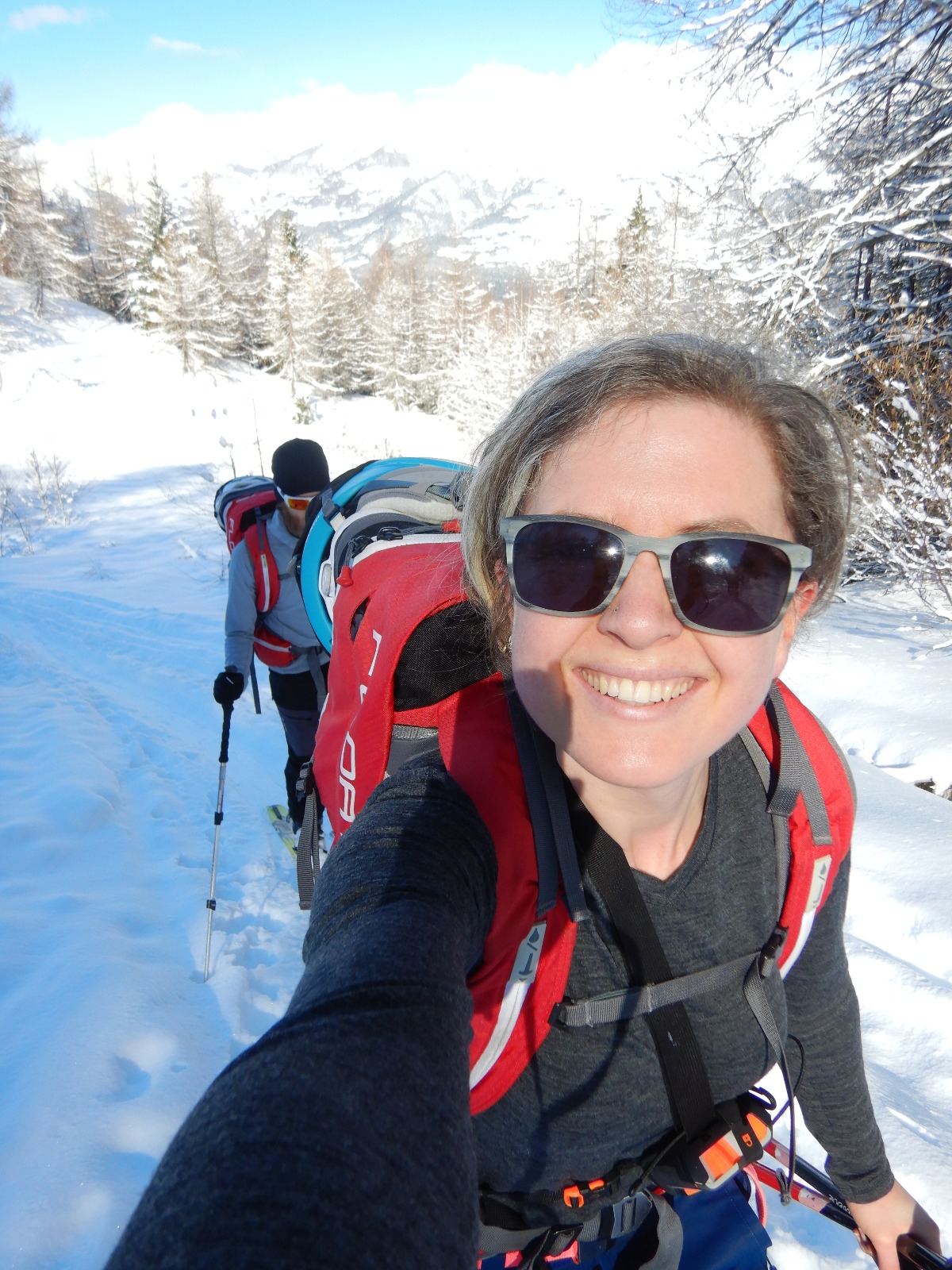 pants and all other skiing clothes things you can think of. Well, while this can be fine for your first ski touring adventure, eventually I would recommend wearing layers. Since hiking up is usually a much more heat-producing activity than skiing down, you're bound to get warm if you only have one set of clothes. Here, layers can help you out. With layers I mean for example a technical (or thermal) bottom layer, a pully, an isolation layer and a hardshell for warmer weather. And if that's to cold for you, you can always add extra layers in between. For me, on the first day we had a lot of sun. When I was walking up I ended wearing only a short sleaved merino shirt and my thin softshell pants with a merino legging underneath. This was enought until the wind became stronger. At that time I just took out my thin softshell to block out the wind a bit and continued walking up.
pants and all other skiing clothes things you can think of. Well, while this can be fine for your first ski touring adventure, eventually I would recommend wearing layers. Since hiking up is usually a much more heat-producing activity than skiing down, you're bound to get warm if you only have one set of clothes. Here, layers can help you out. With layers I mean for example a technical (or thermal) bottom layer, a pully, an isolation layer and a hardshell for warmer weather. And if that's to cold for you, you can always add extra layers in between. For me, on the first day we had a lot of sun. When I was walking up I ended wearing only a short sleaved merino shirt and my thin softshell pants with a merino legging underneath. This was enought until the wind became stronger. At that time I just took out my thin softshell to block out the wind a bit and continued walking up.
However, there's a point when you'll have to prepare for going down. This means taking off the climbing skins, tightening your shoes, changing gloves, eating and drinking... and especially the first time, this might take some time. This means you're bound to get cold, so you'll need your layers. These layers will also protect you against the stronger wind when going down.
3. Different gloves, sunglasses and a hat
For me, it was way to warm to wear my skiing gloves and goggles when going up. Most people will wear sunglasses (category 3 or 4), a beanie and simple thin gloves while going up (depending on the weather though). I ended up bringing three sets of gloves while sometimes not even wearing any. I had a pair of super thin ones, just as a base layer, medium thickness softshell gloves and skiing gloves and I used all of them. When the weather is shit it is also nice to have a dry set of gloves in your backpack just to prevent your fingers from becoming cold. A tip our guide gave us was to have a thicker set of gloves on the inside of your jacket so that you can easily reach them if you're taking a break to warm up your hands.
4. Bring a drybag
When the weather forecast predicts snow or rain, it is nice if your clothes stay dry before going down. For that purpose a drybag is very useful. Mine was 3 liters and I was able to put my insulating jacket, extra gloves, headlight and food in there. While I didn't really need it eventually, it was nice not having to worry about my clothes getting wet.
5. Bring plenty of snacks and make sure you can get to them
You'll definitely want some snacks on your trip. Hiking up takes quite some energy and a delicious energy bar can give you a quick and easy boost. I brought peanutbutter bars and date bars which were delicious and I ate two a day. After my first day I realised putting them in my backpack was quite annoying since I had to stop to get to them, which means getting out of your rythm and becoming cold. So from the second day I simply put them in my backpack and trouser pockets for easy access. This meant I didn't have to stop anymore and could eat a bar without delaying the rest of the group. Other good snacks are nuts, bananas, hartkeks (high calory cookies) and of course sandwiches.
6. Apply (and bring) plenty of sunscreen
As is also the case with skiing, make sure you apply sunscreen before you leave and bring some for during the day if it gets sunny. Don't forget to also get lip balm with sun protection since you don't want to burn them. What I forgot on the first day was to apply sunscreen on my hands. While the burn wasn't to bad since I applied it at midday, you're hands can also burn if you don't wear gloves, so don't forget to apply sunscreen on them!
7. Repair material
Definitely bring some repair material such as duct tape and tie wraps. At the end of the week, my climbing skins kind of broke, which meant I had to tape them to my skis. Luckily there were people in the group with duct tape and tie wraps to fix it. Then again, a knife can also be useful to cut of the tape again.
8. Don't walk too fast!
Maybe you're excited to get to the top of the mountain as fast as possible, or you're really excited to ski down asap. This will probably mean you're off to a quick and fast start. While this might feel good for the first meters, it often turns out to be slower than just going for an easy, comfortable pace. When you start off to fast you usually end up needing more breaks which will slow you down and get you out of your rythm. When we went with our guide he had quite an easy pace and I ended up having much more energy to keep going than the days before. This meant we could keep going, and didn't have to stop too many times preventing us from getting cold.
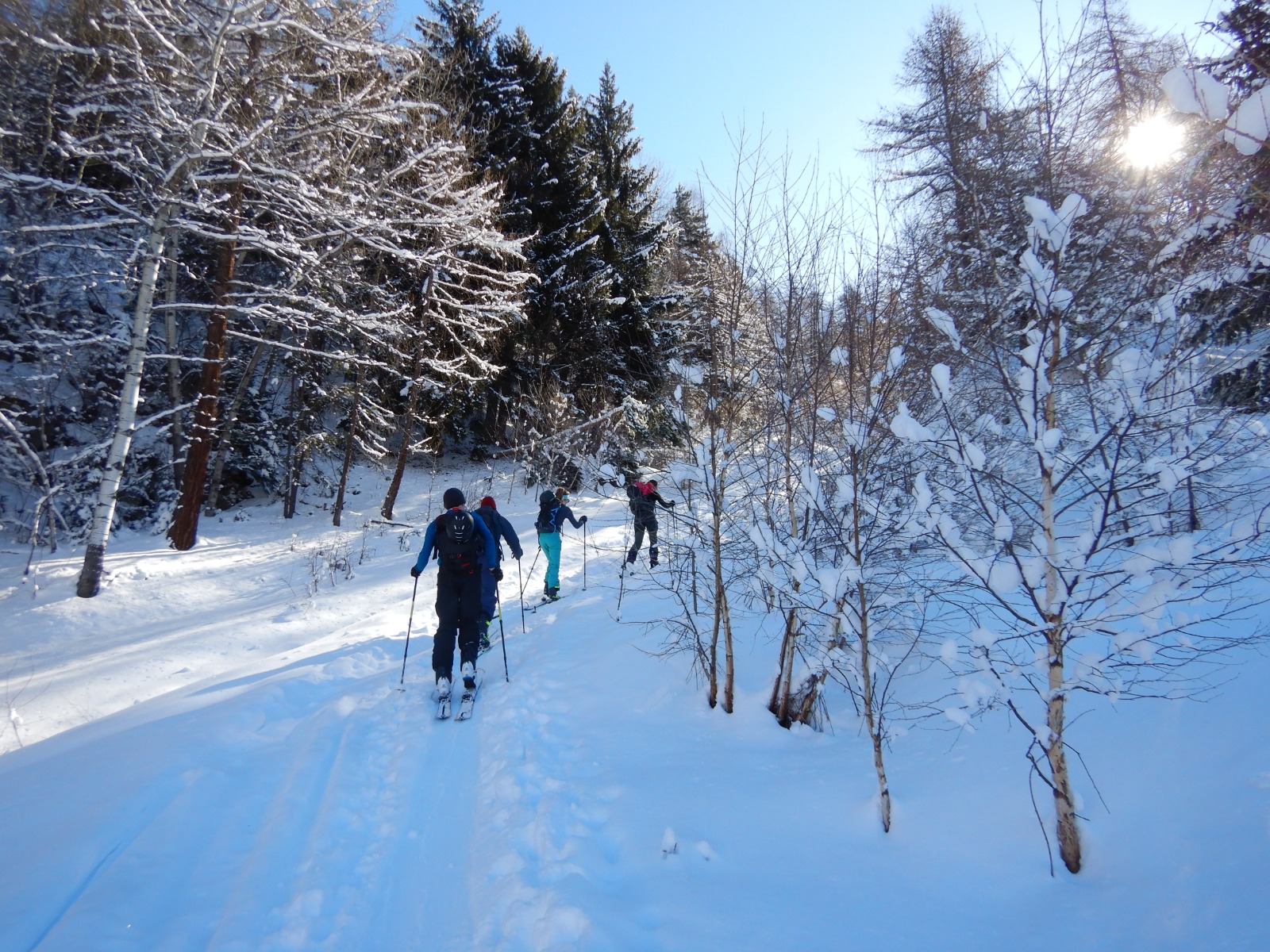
9. Get a good app for navigation as well as a physical map
There are plenty of apps with ski touring maps such as the Ortovox app, Mapy.cz and Fatmap. While these apps are very handy, there's always the possibility of your phone dying due to, for example, bad weather. In that case it's always useful to have a physical map of the area, preferably a winter map. This will help you in navigating back safely.
10. Communication
Communication is crucial for a fun and safe trip. Discussing who will be the leader of the group (probably the most experienced one), who makes the decisions that everyone will follow, and deciding on a return time can be very important. It will reduce discussion time and will ensure that you'll all get back happily and safely.
11. Rent your gear
For the first time ski touring, I'd definitely recommend to rent your gear. I was thinking of buying it, but eventually decided not to because of the high expenses. Since I didn't know whether I would really like the sport, it seemed better to try it out first. Also, my boyfriend convinced me that renting would be nice since I could try out what gear would suit me. There are so many different types of shoes and skis that it's wise to try some out first before investing a lot of money in a set you might not use or like.
Well, these are my 11 tips for a first time ski touring adventure! Hopefully it helps a bit in preparing yourself for the adventure. Don't forget to have fun and stay safe :D
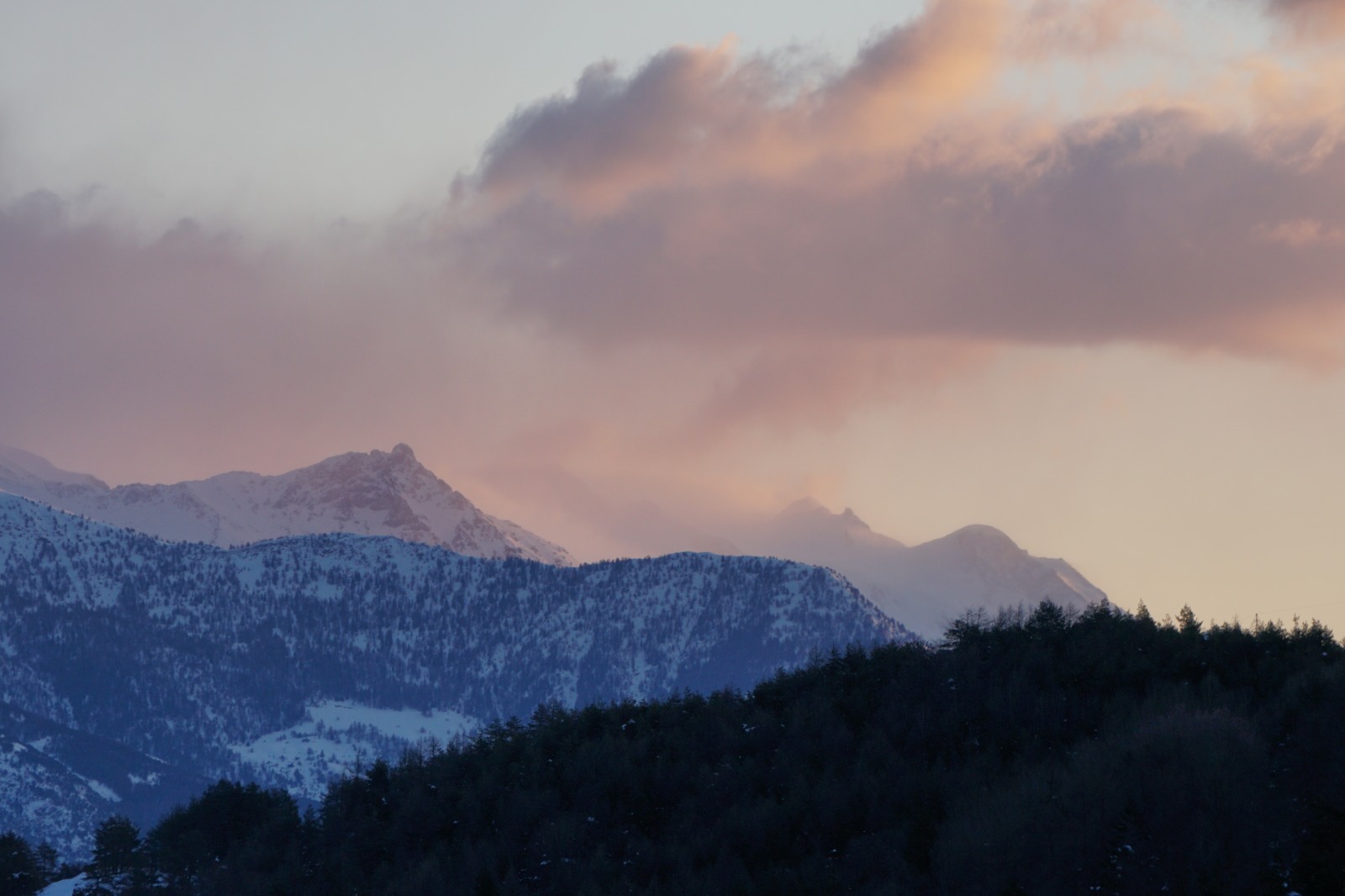









wow Rohan Pitai contributed on 22-12-2021 13:54
Dear Hannah,
This sounds amazing! I have been snowboarding for three years now and I never considered ski touring. It actually sounds really scary if you aren't that experienced, but how did you overcome your fear and said letsgo?
Add new contribution